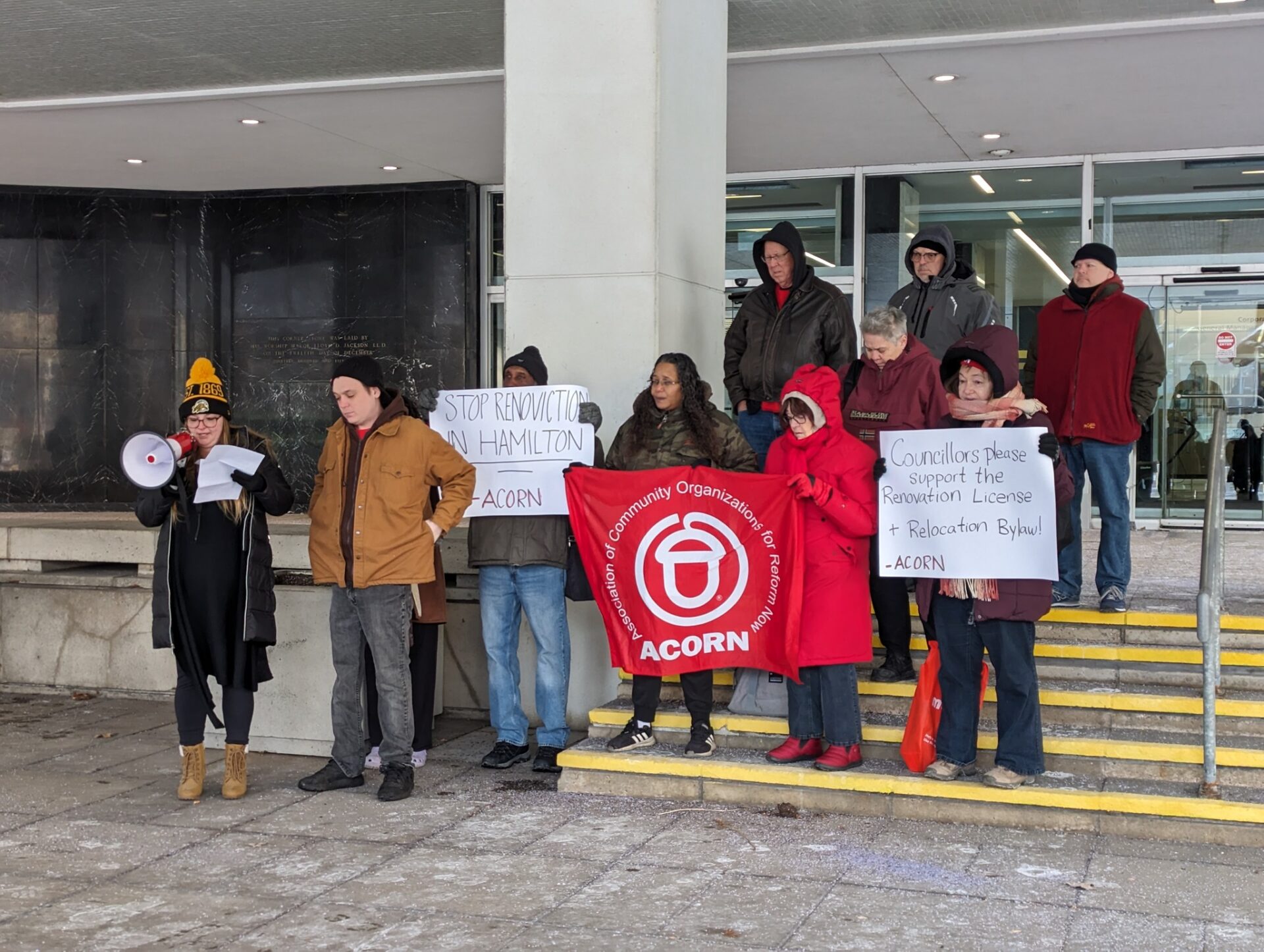The London Free Press: Hamilton bylaw to end renovictions a model for other municipalities
Posted January 29, 2024
The City of Hamilton took bold action to end renovictions, a practice where tenants are evicted from their homes due to renovations.
The City of Hamilton took bold action to end renovictions, a practice where tenants are evicted from their homes due to renovations. The city’s general issues committee (comprised of the mayor and all councillors) voted unanimously on Jan. 17 to adopt Ontario’s first anti-renoviction bylaw.
Renovictions are one of the leading causes of the erosion of existing affordable housing. In some cases, renovation work is so extensive that it requires a landlord to have vacant possession of the unit.
However, in many other instances, evictions are done in “bad faith,” and modest improvements are used as a pretext to remove sitting tenants and dramatically raise the rent for new ones.
Licenses and permits
When Hamilton’s renovations licence and relocation bylaw comes into effect, it will require any landlord issuing an N13 eviction notice to obtain a licence from the city, which will cost $715. In order to get that licence, they will need to first obtain a building permit and provide proof from a qualified expert, such as an engineer, that vacant possession is required in order to carry out the renovation work.
In other words, evicting tenants for basic repairs, or to perform a few cosmetic upgrades will no longer be permitted.
If this is approved, the bylaw clearly stipulates that landlords either provide alternative accommodation in another unit, or financial compensation to the tenant for the duration of the renovation. This compensation is a top up between what the tenant was paying in rent and the average market rent of a similar unit.
Addressing an existing loophole
I cannot stress enough how different this is from the current situation facing Ontario tenants. Under existing rules, while tenants have the right to return to their renovated unit once the work has been completed, this rarely happens in practice.
The overarching reason for this is that landlords have no responsibility to their former tenants once the eviction is done. The onus of responsibility to exercise the right to return is squarely and solely placed in the hands of tenants. The relationship between landlord and tenant is severed, and it’s up to the tenant to re-establish it if they want to return home.
That’s the major loophole in the current rules. Combined with a lack of rent control on vacant units (meaning a landlord can charge whatever they want when a new tenant moves in), this creates a huge financial incentive to evict long-term tenants, placing a severe burden on them. Evicting long-term tenants in favour of higher-paying new tenants under the guise of renovictions erodes much of our existing housing stock that is affordable.
Hamilton’s bylaw aims at addressing this in two ways. First, if there are actual instances when the scale of renovations requires tenants to leave, it provides clear pathways and expectations to ensure that they can return once the work is completed.
Second, for those bad faith landlords who want to use renovation merely as a cover to force tenants out of their homes, these new rules provide enough of a disincentive and discouragement to severely curtail and possibly even eliminate the cruel and unjust practice of renovictions.
The bylaw achieves these objectives by binding landlord and tenant together throughout the entire process. It clearly stipulates that the onus of responsibility to exercise the right to return to their former unit is most definitely a shared one between the landlord who owns the home, and the tenant who lives in it and considers it their home.
This is what other successful anti-renoviction and tenant protection policies do, including in New Westminster, B.C., which was the first city in Canada to meaningfully address renovictions and Burnaby, B.C., which arguably has the best tenant protection rules in Canada.
Action for change
It is important to stress that these bylaws don’t emerge out of thin air. They develop through a combination of council members and mayors who champion these causes, staff who conduct research and draft out bylaws as well as advocates, tenants and activists who campaign and organize for a better, fairer and more equitable city.
Several Hamilton councillors have long supported cracking down on renovictions; however, much of the credit for this new bylaw needs to go to ACORN Hamilton, a tenant advocacy and organizing group that has campaigned for years. At their request, I was a delegate at the general issues committee meeting in my capacity as a housing expert.
At several council and committee meetings over the past year, tenants and ACORN members shared their own personal experiences of renoviction and its impacts.
Actual impacts
Lived experiences often do not show up in statistics. Because of this, it is often hidden from mainstream planning, policy and political debates. And when it’s invisible, it is easy to conclude that renovictions are not a big problem.
My own research, conducted with the Social Planning Network of Ontario, has shown that formal evictions enforced by the courts (and therefore visible within conventional statistics) constitute a tiny fraction of displacement experienced by tenants.
Some common tactics used by landlords to force tenants out include offering tenants a few thousand dollars to leave, coercion, intimidation, harassment or ignoring repair requests.
Tenant organizing and advocacy not only fights back against unfair landlords, it provides the necessary push to compel councils to act. Without ACORN’s tireless efforts, Hamilton councillors may not have unanimously adopted Ontario’s first anti-renoviction bylaw.
Future housing needs
In Ontario, this is just the start of action to end renovictions. Communities across the province are watching closely and developing their own bylaws.
British Columbia provides further inspiration. New Westminster repealed its municipal bylaw in 2021, not because it wasn’t effective (it basically ended renoviction), but because it became redundant after the provincial government amended the Residential Tenancy Act.
This is the kind of future tenants need in Ontario. There is a growing realization that we cannot simply build our way out of a housing crisis. We need to build the right kind of supply and proactively work to protect tenants and existing affordable housing. Cracking down on cruel and unjust evictions is an essential way to achieve that.
****
Article by Brian Doucet for The London Free Press

